 Crime
Crime  Crime
Crime  Technology
Technology 10 Hilariously Over-Engineered Solutions to Simple Problems
 Miscellaneous
Miscellaneous 10 Ironic News Stories Straight out of an Alanis Morissette Song
 Politics
Politics 10 Lesser-Known Far-Right Groups of the 21st Century
 History
History Ten Revealing Facts about Daily Domestic Life in the Old West
 Weird Stuff
Weird Stuff 10 Everyday Products Surprisingly Made by Inmates
 Movies and TV
Movies and TV 10 Actors Dragged out of Retirement for One Key Role
 Creepy
Creepy 10 Lesser-Known Shapeshifter Legends from Around the World
 Animals
Animals 10 Amazing Animal Tales from the Ancient World
 Gaming
Gaming 10 Game Characters Everyone Hated Playing
 Crime
Crime 10 Terrifying Serial Killers from Centuries Ago
 Technology
Technology 10 Hilariously Over-Engineered Solutions to Simple Problems
 Miscellaneous
Miscellaneous 10 Ironic News Stories Straight out of an Alanis Morissette Song
Who's Behind Listverse?

Jamie Frater
Head Editor
Jamie founded Listverse due to an insatiable desire to share fascinating, obscure, and bizarre facts. He has been a guest speaker on numerous national radio and television stations and is a five time published author.
More About Us Politics
Politics 10 Lesser-Known Far-Right Groups of the 21st Century
 History
History Ten Revealing Facts about Daily Domestic Life in the Old West
 Weird Stuff
Weird Stuff 10 Everyday Products Surprisingly Made by Inmates
 Movies and TV
Movies and TV 10 Actors Dragged out of Retirement for One Key Role
 Creepy
Creepy 10 Lesser-Known Shapeshifter Legends from Around the World
 Animals
Animals 10 Amazing Animal Tales from the Ancient World
 Gaming
Gaming 10 Game Characters Everyone Hated Playing
10 Things You Probably Didn’t Know About Albert Einstein
Most people agree that Albert Einstein was one of the greatest scientists who ever lived. As with many famous people, however, some interesting facts about his life have been distorted or forgotten over time. When digging a little deeper into his life, we found some nuggets that prove Einstein still has the capacity to surprise and even amaze us.
There’s also a bonus entry with the “Einstein Puzzle” to test your intelligence. You don’t need to know physics or have a college degree. Just figure out who owns the fish . . . and discover if you’re part of the supposed 2 percent who can solve the puzzle.
10 His Authorship Of The Theory Of General Relativity Was Disputed
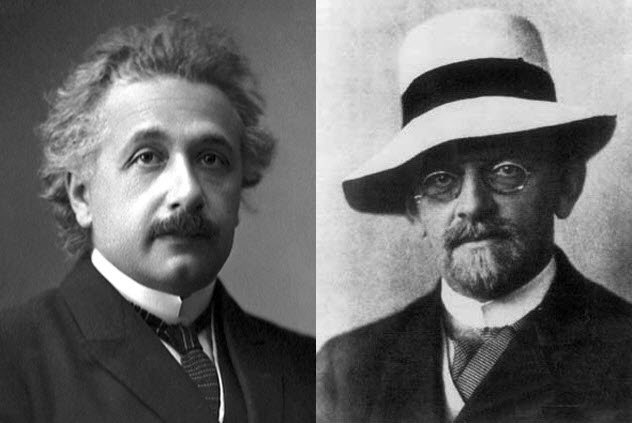
The discovery of the theory of general relativity is surrounded by serious but little-known allegations of plagiarism by Albert Einstein, German scientist David Hilbert, and their respective supporters. It all started when Hilbert claimed that he had come up with the theory of general relativity first and that his work had been copied by Einstein without due credit. Einstein denied the accusations, saying it was Hilbert who had copied some of Einstein’s earlier papers.
At first, most people believed that both scientists had worked independently on the theory of general relativity and that Hilbert had submitted an article about it with the correct equations five days before Einstein did. However, after historians looked into the issue, they found that it was Hilbert who took some ideas from Einstein without giving him credit.
Apparently, the proofs originally submitted by Hilbert lacked a critical step that rendered them incorrect. By the time Hilbert’s paper was published months later, he had corrected his error. It then conformed to Einstein’s proofs, which had already been published quite a while earlier.
9 He Did Not Fail In High School
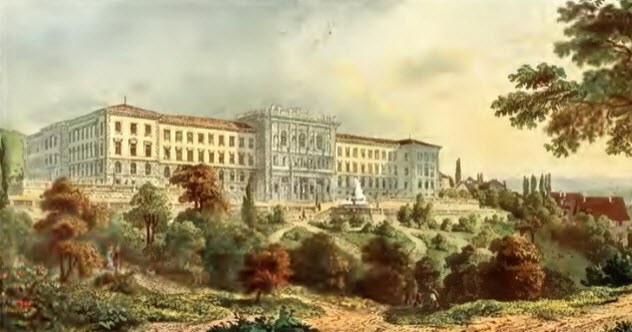
Einstein never failed in high school. In fact, he was so good at math that he was already studying calculus at age 12, three years earlier than normal. At age 15, Einstein wrote an advanced essay that became the basis for his later work in relativity.
The myth that he failed in high school was due to differences in the marking systems between German and Swiss schools. When Einstein changed from a German school to the Canton School in Aargau, Switzerland, the grading system—1 through 6 (similar to A through F)—was reversed. The grade of 6, which used to be the lowest grade, become the highest, and the grade of 1, which used to be the highest grade, became the lowest.
However, Einstein did fail his college entrance examination. Before he went to Aargau, where the failure myth began, he had taken an examination to advance to the Federal Polytechnic School in Switzerland. Einstein did exceptionally well on his mathematics and physics tests, but he scored poorly in several nonscience subjects, especially French.
8 His Inventions
During his lifetime, Einstein was credited with several inventions, including the Einstein refrigerator which he coinvented with his friend and fellow physicist Leo Szilard. Unlike regular refrigerators, the Einstein refrigerator did not use electricity. Instead, it cooled food through an absorption process that used pressure changes between gases and liquids to reduce the temperature in a food chamber.
Einstein was motivated to invent his refrigerator after hearing of the deaths of a German family who inhaled toxic gases leaking from a conventional fridge. In the 1800s, the mechanical compressors in refrigerators could have faulty seals that leaked poisonous gases such as sulfur dioxide and methyl chloride.
Einstein also invented a pump and a blouse. The blouse had two set of buttons sewn parallel to each other. One set of buttons would make the blouse fit a slim person while the other set would make it just right for a much heavier person. So a slim person who bought an Einstein blouse and added weight over time or a much heavier person who bought one and lost weight over time did not need to buy another blouse. Instead, they would just use the second row of buttons.
7 The Loophole That Could Make The United States A Dictatorship
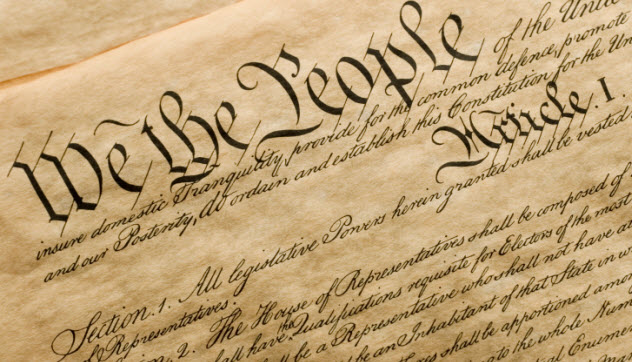
Kurt Godel was one of the scientists who fled to the US from Nazi-held territories during World War II. Unlike Einstein, Godel initially had a hard time getting American citizenship. When he was finally invited for a citizenship interview, he was required to bring two people with him to vouch for his behavior. Godel took his friends Oskar Morgenstern and Einstein.
Godel had read extensively to prepare for the interview, which was coincidentally conducted by Judge Phillip Forman, a friend of Einstein. When Forman expressed relief that the US was not and would never become a dictatorship, Godel disagreed, saying that it was very possible for the US to become a dictatorial state because of a loophole in the Constitution.
He was about to explain further, but Einstein interrupted Godel because his answer could have ruined his chance for citizenship. Judge Forman quickly continued with the interview, and Godel became a US citizen.
This issue only became known because Morgenstern wrote about it in his diary. However, he did not state what the loophole was or how it could turn the US into a dictatorship. No one knows which part of the Constitution contains the apparent loophole, but there is speculation that Godel was thinking of Article V, which permits amendments to the Constitution. It’s possible that certain amendments could legally destroy the Constitution.
6 The FBI Believed He Was A Soviet Spy

The FBI spied on Einstein from 1933, when he entered the United States, until his death in 1955. They frequently tapped his phones, intercepted his mail, and searched his trash for any evidence that he was involved with a suspicious group or activity, including spying for the Soviet Union. Once, the FBI even teamed up with the Immigration and Naturalization Service to find a reason to deport him. They believed that he was either an antigovernment radical or a communist because of his political views and his links to antiwar and human rights groups.
Before Einstein’s arrival in the US, the Woman Patriot Corporation sent a 16-page letter to the State Department protesting his entry into the country. They argued that even Joseph Stalin had fewer links to communist groups than Einstein.
As a result, the State Department interrogated Einstein extensively about his political beliefs before issuing a visa. Fed up, Einstein angrily told his interviewers that the American people had begged him to come to the US and he would not tolerate being treated as a suspect. After he became a citizen, Einstein stayed in the US even though he knew that he was under surveillance. Once, he even told a Polish ambassador that their conversation was being secretly recorded.
5 He Regretted His Involvement In The Atomic Bomb
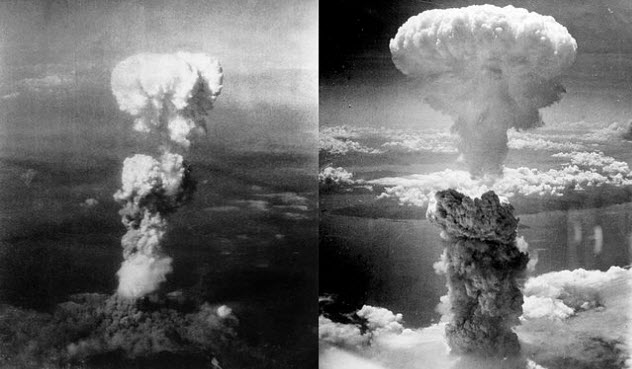
Einstein never took part in the Manhattan Project, a US government program that created the first nuclear bombs during World War II. Even if he had wanted to participate, he was denied the necessary security clearance. Scientists taking part in the project were also barred from meeting with him.
Einstein’s only involvement was signing a letter urging President Franklin Roosevelt to develop the atomic bomb. Along with physicist Leo Szilard, Einstein had written the letter after learning that German scientists had split the uranium atom.
Although he was aware of the enormously destructive power of the atomic bomb, Einstein got involved because he feared that the Germans might produce the bomb first. Yet he eventually regretted drafting and signing the letter. When he heard that the US had dropped the first atomic bomb on Hiroshima, he responded, “Woe is me.” Einstein later confessed that he wouldn’t have signed the letter if he’d known that the Germans would never make the bomb.
4 Eduard Einstein
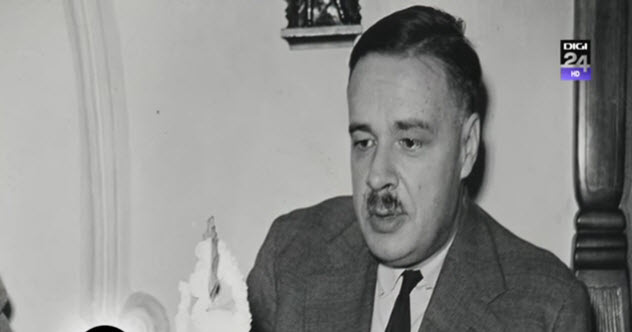
Born in 1910, Eduard was Einstein’s second son with his wife Mileva Maric. Eduard (nicknamed “Tete” or “Tetel”) often fell ill as a child and was diagnosed with schizophrenia at age 20. Mileva, who had divorced Einstein in 1919, initially took care of Eduard but later placed him in a psychiatrist hospital.
Einstein was not surprised when Tete was diagnosed with the illness. Mileva’s sister suffered from schizophrenia, and Tete had often exhibited behaviors that pointed to the illness. Einstein fled Germany for the US a year after Tete went to the hospital. Although Einstein had visited his sons often when they all lived in Europe, Einstein only wrote letters after he went to America.
Those letters from Einstein to Eduard were rare but often encouraging. In one letter, Einstein compared people to the sea, saying they could be “even and friendly” or “stormy and tricky.” He added that he hoped to see his son again the following spring. Unfortunately, World War II broke out, and Einstein never saw Tete again.
After Mileva died in 1948, Tete remained in the hospital for about nine more years. He spent eight years with a foster family but returned to the hospital after his foster mother became ill. Tete died in 1965.
3 He Was An Avid Smoker
The two things Einstein liked best were his violin and his pipe. An avid smoker, he once said that he believed smoking was necessary for calmness and “objective judgment” in humans. After his doctor told him to give up the unhealthy habit, Einstein put a pipe in his mouth and just chewed on it. Sometimes, he also retrieved cigarette butts from the streets to smoke in his pipe.
Einstein had a lifetime membership in the Montreal Pipe Smokers Club. One time, he fell overboard during a boating trip but managed to hang onto his cherished pipe in the water. Besides his many manuscripts and letters, a chewed pipe is one of the few personal items we have of Einstein’s. He had given the pipe to Gina Plunguian—a sculptor, friend, and employee who had made a bust of him.
2 He Loved Women
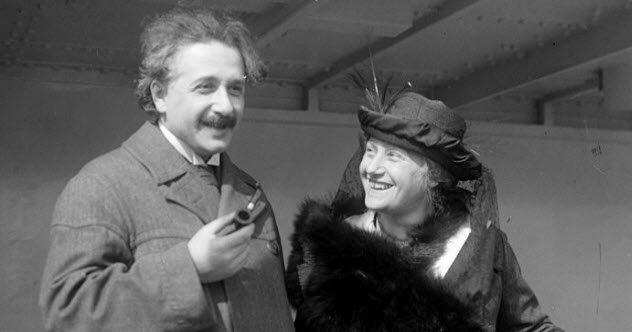
Einstein occupied himself with women whenever he wasn’t working on E=mc2, smoking his pipe, drafting a letter, or designing a blouse. His letters reveal how much he loved women or according to Einstein, how much women loved him.
In an interview with NBC News, Hanoch Gutfreund, chairman of the Albert Einstein Worldwide Exhibition at Hebrew University, described Einstein’s marriage to his second wife, Elsa, as a “marriage of convenience.” Gutfreund also thinks that 3,500 pages of Einstein’s letters, released in 2006, suggest that Einstein was not as bad a father and husband as originally believed.
Admitting that he couldn’t stay with just one woman, Einstein was candid with Elsa about his extramarital affairs. He often wrote her letters about the many women flocking around him, which he characterized as unwanted attention. While married, he had at least six girlfriends, including Estella, Ethel, Toni, and Margarita.
In a 1931 letter to his stepdaughter Margot, Einstein wrote: “It is true that M. followed me [to England] and her chasing after me is getting out of control. Out of all the dames, I am in fact attached only to Mrs. L., who is absolutely harmless and decent.”
1 His Biggest Blunder

Einstein might have been a brilliant scientist, but he wasn’t perfect. In fact, he made at least seven mistakes in his various proofs of E=mc2. However, in 1917, he made what he reportedly called his “biggest blunder”: He added the cosmological constant—represented by the Greek capital letter lambda—to the equations of his theory of general relativity. Lambda represented a force countering gravity’s attraction. Einstein added lambda because most scientists believed that the universe was stationary at that time.
Later, Einstein removed the constant when he discovered that his previous equations were correct and the universe was actually expanding. However, in 2010, scientists revealed that the equations with lambda might actually be right. They believe that lambda explains “dark energy,” a theoretical force that counteracts gravity and triggers the expansion of our universe at an accelerating rate.
+ The Einstein Puzzle
Who Owns The Fish?
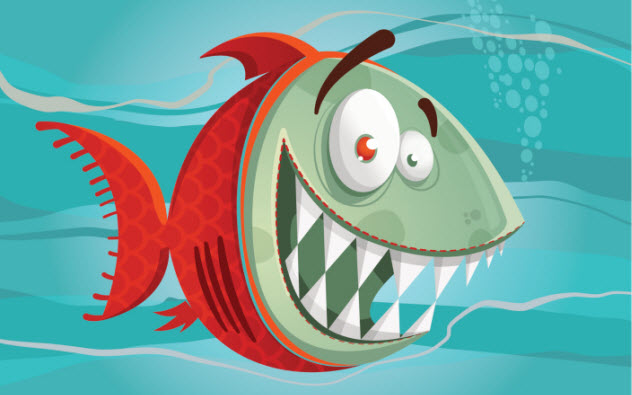
The Einstein Puzzle (aka the “Zebra Puzzle”) is an intelligence test that was supposedly invented by Einstein to discourage students from wanting him as their adviser. However, there is very little proof that he actually invented it. It is said to have a 98 percent failure rate.
Here’s the puzzle:
There are five houses next to each other on a road. Each house is a different color and has a different male owner. Each owner has different tastes—including type of pet, favorite drink, and brand of cigarettes. Each man also has a different nationality.
The Swede has dogs. The German smokes Prince cigarettes. The green house is just to the left of the white house. The man who likes Blue Masters cigarettes also drinks beer. The Dane drinks tea. The owner of the yellow house smokes Dunhill cigarettes. The Norwegian owns the first house. The owner of the green house also drinks coffee. The Brit lives in the red house. The owner of the center house drinks milk. The smoker of Blend cigarettes has a neighbor with cats. The man who smokes Pall Mall cigarettes also keeps birds. The Norwegian lives next to the blue house. The smoker of Blend cigarettes has a neighbor who drinks water. The man who lives next to the Dunhill smoker also keeps horses.
Which man owns a pet fish? (The answer can be found here.)
Elizabeth solved the Einstein puzzle. You can email her at [email protected] or check out her blog at factshood.com.








